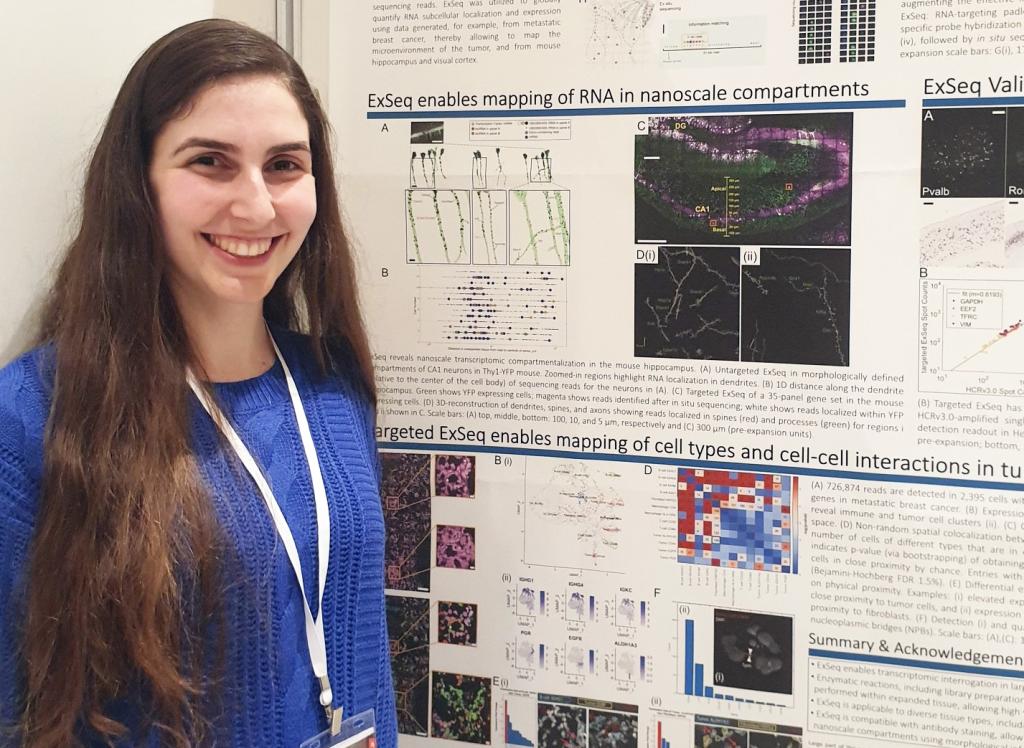Spatial sequencing towards curing Alzheimer’s disease

Last month, Michal Danino learned that she was accepted into Intel’s 2021 scholarship program for promoting excellence and diversity in engineering and science. “The scholarship aims to diversify the world of technology and take a part in social change since diversity in technology leads to a better outcome and technological revolutions,” says Danino. “The scholarship was awarded to 25 excelling engineering, computer science, chemistry and physics bachelor and master students who took part in community or volunteer work, promoting diverse communities.” Danino’s eligibility is a result of her high GPA, long years of community service – including MADA, working with special needs children, and encouraging and supporting religious girls who want to join the military – and her research of Alzheimer’s disease.
Danino, 27, from Givat Shmuel, received her BSc in biomedical engineering from Tel Aviv University, then went on to acquire her MSc at the Faculty of Engineering in Bar Ilan, at Dr. Shahar Alon’s lab of spatial genomics. Her research analyzes a new method for treating Alzheimer’s patients via hyperbaric oxygen therapy. “Alzheimer’s attacks the central nervous system. It damages the memory and one of its characteristics is a deficit in oxygen supply to the brain (hypoxia) due to low blood flow to the area. It results in changes and loss of neurons, the appearance of amyloid plaques, an increase in inflammatory processes, and other phenomena,” explains Danino. “There’s not enough information regarding the etiology of Alzheimer’s disease, which is why there is still no effective treatment available. One of the main questions is how cells respond to signals from the changing microenvironment.”
Danino’s research attempts to answer this question. She uses the lab’s innovative spatial sequencing technology which helps survey the differences in the locations of RNA in cells, according to their proximity to amyloid plaques created by the disease. Danino is applying this technology on a new proposed Alzheimer’s treatment: hyperbaric oxygen therapy, where the patient breathes oxygen at high atmospheric pressure, raising the levels of oxygen in their blood and tissue. “The technology locates the exact spatial location of each cell and molecule, as well as each signal related to the disease’s side effects such as amyloid plaques,” she explains. “Then, using statistical tools and machine learning algorithms, I can create and analyze a spatial molecular map at the individual brain cell level; I will be able to examine the cellular changes and gene expression, both as the result of the disease and the treatment. In other words, this research will not only contribute to the characterization of Alzheimer’s disease – but it could also help understand if and how the proposed hyperbaric treatment indeed hinders the progress of the disease and possibly cures it.”
Previous Alzheimer’s research examined the contents of the cell, including genetic expression levels or the spatial location of single genes in the cell and tissue. Danino’s innovative research combines both of these capabilities. “The spatial sequencing technology allows us to obtain both the gene expression levels and maintain their location in the tissue in a large number of cells and genes. On that account, this research gives us a better picture of the genes, tissues, and molecular routes of Alzheimer’s disease; it allows us to explore new avenues of research and discover the effects of the proposed treatment,” says Danino. “This is another step towards understanding the disease and, hopefully, curing it.”
Last Updated Date : 08/11/2020



